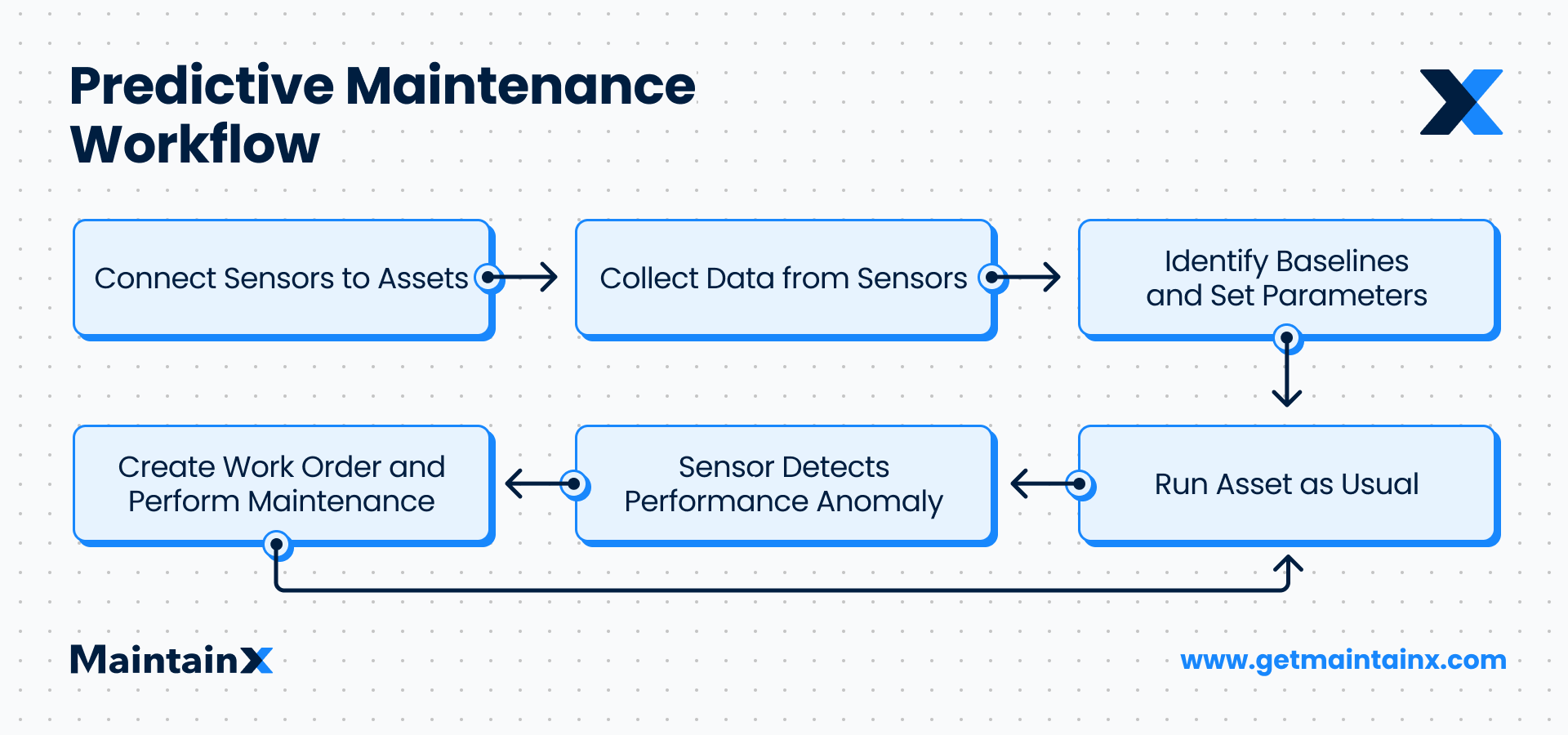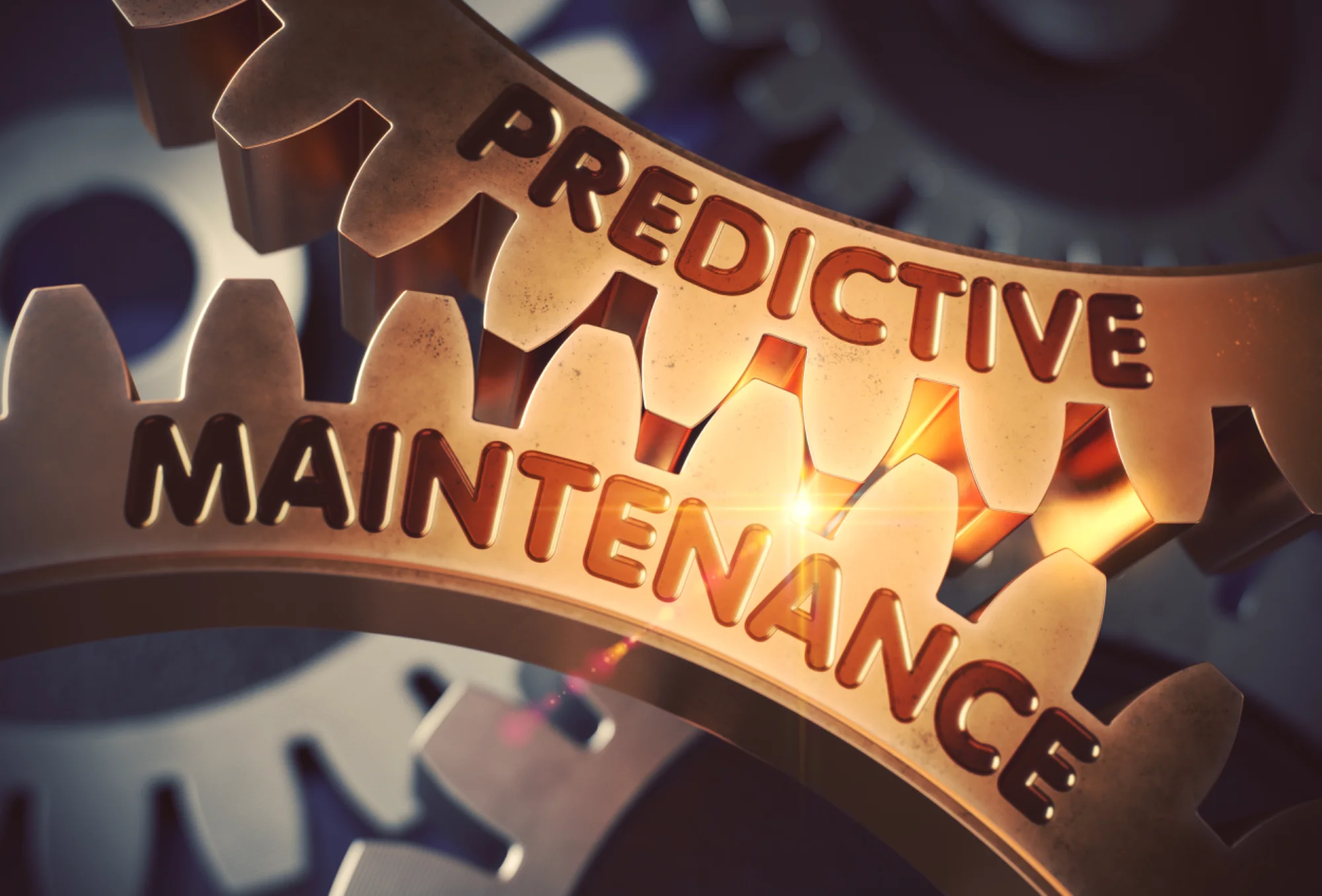
In recent years, business leaders faced intense pressure to cut costs, increase efficiency, and reconfigure operational systems.
For this reason, some leading industrial organizations are now turning toward Industrial Internet of Things (IIoT) technologies and predictive maintenance (PdM) programs. The heart of these optimized maintenance plans is computerized maintenance management systems (CMMS) used in conjunction with sensors and machine-learning technology. When used together, the tools can predict equipment failure with unprecedented accuracy.
Organizations using PdM technologies do not risk performing too much or too little maintenance work—hence IIoT’s growing appeal. As reported by the U.S. Department of Energy, a functional PdM program can decrease operations and maintenance (O&M) costs, increase ROI by up to ten times, and reduce asset breakdowns by a whopping 75 percent.

7 Industries Using IIoT to Save on O&M Costs
1. Manufacturing

The manufacturing industry is among the largest industries using IIoT. According to Statista, the industry accounted for the highest spending on IIoT last year, at $40 billion, alongside the transportation and logistics industries. This includes spending on hardware, software, connectivity, and services.
IIoT is primarily used in the manufacturing industry for production asset management, maintenance, and field services. The technology allows industrial maintenance technicians to monitor asset performance in real time.
According to McKinsey, PdM can help improve asset availability by up to 15 percent and reduce maintenance costs by 25 percent. With numbers like these, it’s no wonder Industry 4.0 is at the forefront of digitizing manufacturing equipment upkeep.
2. Logistics and Transportation

Like manufacturing, the transportation and logistics sector spent $40 billion on IIoT just two years ago. IIoT is mainly used for freight monitoring in the transportation industry.
Advanced communication and monitoring systems, enabled by IIoT, are driving transport and logistics companies up the value chain. The increasingly connected transport and logistics industry is leveraging IIoT for:
- Improving IT security for online transactions.
- Real-time inventory-level monitoring to enable effective maintenance planning.
- Remote monitoring of IoT-enabled vehicles to enable timely and effective deliveries.
- Monitoring fuel consumption to allow shipping through areas with lower transportation costs.
Logistics and transportation are now needed more than ever by residents encouraged to stay home because of government mandates. Expect spending on technological operational improvements to grow exponentially moving forward.
3. Energy and Utilities

Another industry using IIoT technologies is energy and utility companies. These companies are now monitoring their assets for signs of failure with IIoT technologies. The energy sector is one of the most volatile industries. It’s under constant pressure to reduce costs by implementing better collection and refining methods without losing productivity.
Recently, industry leaders such as Shell have launched predictive maintenance programs to cut costs, enhance safety, and increase reliability. Oil and gas organizations have experienced ROI in the following areas:
- Drilling Management: Teams that conduct deep underground or offshore drilling often find it challenging to monitor machinery with precision. Sadly, the lack of equipment failure foresight has led to deadly disasters like the Deepwater Horizon explosion. With equipment alerts, IIoT helps reduce the likelihood of such incidents.
- Pipeline Monitoring: Pipeline leaks have resulted in almost 200 fatalities, 900 injuries, and $5.75 billion in losses in the last decade. Companies are now using IIoT sensors to automate pipeline inspections and identify potential points of failure. The technology hasn’t only prevented accidents, but it has reduced the need for frequent human inspections.
- Revenue Growth: Finally, energy and utilities is a competitive industry. Companies are continually trying to find ways to reduce operational costs and grow their revenue. Investing in IIoT enables them to reduce maintenance costs through predictive maintenance. Considering that maintenance makes up about nine percent of an average facility’s annual budget, reducing maintenance costs also impacts the company’s bottom line.
4. Healthcare
Historically, the healthcare industry has been one of the slowest adopters of IIoT. This is mainly because of a lack of security protocols and standardization across the industry. However, evidence shows healthcare organizations are warming up to the technology. As the global population continues to grow, so does the demand for accessible healthcare.
The IoT healthcare market is projected to reach $337 billion by 2025 after only being worth $24 billion in 2015. Why? Experts estimate IIoT will save the healthcare industry about $300 billion through the use of smart devices. The healthcare industry uses IIoT for:
- Simultaneous reporting and monitoring using smart medical devices to improve response rates to emergencies.
- Patient tracking for faster assistance.
- Centralization of patient records through Electronic Healthcare Records (EHR) systems. This will lead to a well-organized medical history, which can also be easily updated through wearable devices.
Other uses of IoT technology include smart devices that enable healthcare providers to monitor non-critical patients from home, therefore, reducing hospital admissions and minimizing costs.
Remote diagnostic tools will also reduce the need for costly in-office visits. The applications of IIoT in healthcare are endless. But keeping up with HIPAA protocols and securing private data still remains a significant challenge for the industry.
5. Mining

The use of IIoT in the mining industry is still in its infancy. However, industry leaders increasingly rely on the technology to create a more effective and safer operational ecosystem. IIoT is pushing the industry towards optimizing its equipment and material for improved efficiency and returns.
Miners can now monitor mining conditions in real time and anticipate equipment failures. They are, therefore, in a position to make data-driven decisions and develop predictive maintenance strategies. They can also optimize drilling and blasting through IIoT.
This has led to improved scheduling for mines and logistics. According to Industry Week, mining company Goldcorp is leveraging IIoT to build AI-driven drilling machines. They have automated guidance systems for cutting and can detect materials and boundaries. The company also fitted its employees’ helmets with sensors that give real-time locations of employees during an emergency.
6. Railway
Railway systems form an integral part of metropolitan cities across the world. The transit system in New York City, ranked 7th in the world, has an average annual subway ridership of 1.76 billion people. However, public railway systems are known for maintenance issues and poor customer service. IIoT now provides solutions to both prevalent issues.
Railway managers are moving from reactive maintenance to preventive maintenance using IIoT. In other words, IIoT is enabling them to abandon the “if it’s not broken, don’t fix it” philosophy. Managers can now integrate IIoT sensors as part of condition-based maintenance monitoring programs. The result is more efficient, timely, and safer railway operations. Additionally, access to historical maintenance data allows railways to know when to replace trains instead of repairing them.
7. Construction

The construction industry is among the last major industries to join Industry 4.0. This lag time is surprising, considering the sector is responsible for 6 percent of the world’s GDP.
Adoption of IIoT in the construction industry enables companies to:
- Collect and report all types of data, including inventory levels, work progress, safety hazards, vibration, speed, and location.
- Improve project delivery times through automated ordering of new materials.
- Unify the different moving parts of a construction site to centralize monitoring and data management.
- Increase equipment uptime and reduce project disruptions.
While we predict more construction companies will adopt IIoT, the change will be slow. Most industry players still rely on reactive maintenance at this time. Besides the industries previously mentioned, experts also predict aviation and robotics will begin using IIoT to save costs, enhance safety, and grow revenue.
What’s Next for Industries Using IIoT?
As we have shown, several industries are using IIoT technologies to increase efficiency, decrease costs, and enhance safety. In short, industry 4.0 is here! Expect IIoT to play a bigger role in both maintenance management and business management.
Before the pandemic, the IIoT market was growing at a compound rate of 16.7 percent and is projected to reach $263 billion by 2027. We expect the marketplace to meet or exceed the figure as companies increasingly prioritize digitization in the year ahead.
Ready to take your maintenance program to the forefront of IIoT?
FAQs

Caroline Eisner is a writer and editor with experience across the profit and nonprofit sectors, government, education, and financial organizations. She has held leadership positions in K16 institutions and has led large-scale digital projects, interactive websites, and a business writing consultancy.




.jpg)















